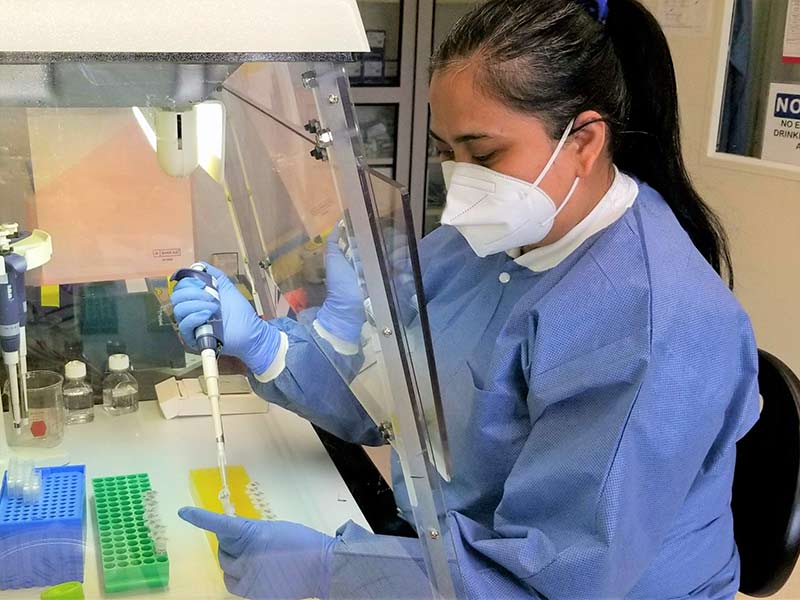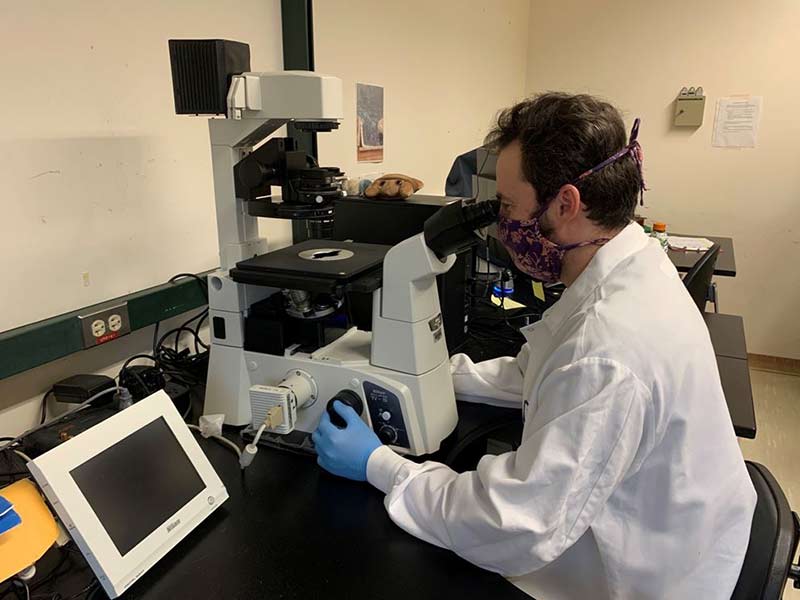Microbiology Unit
Our main goal is to test a range of samples for microorganisms to help keep the public and our environment safe and healthy.
Microbial testing
We analyze water and wastewater for:
- Fecal Indicator Bacteria (FIB) – used to measure the level of fecal pollution present in water.
- Microbial Source Tracking – using our state-of-the-art, genetically based laboratory techniques we can identify whether the bacteria in our samples came from humans, dogs, or cows.
- Freshwater algae identification - to protect people and pets from potentially harmful algal blooms.
- Biosolids testing - we test for:
- viruses that are harmful to people; and
- parasites that are harmful to people.
These data are used for regular monitoring of marine and freshwater beaches, lakes, and streams. We also help assess biosolids and reclaimed water to make sure these are safe to use in the environment. Our scientists also identify algae found in lakes, rivers, and ponds around Washington state.

Microbiology and public health
We work with project managers and health officials to develop risk assessments. For example, if a public swim beach should be closed due high levels of bacteria. We respond quickly to developing needs such as sewage spills and discharges.
Our scientists are always working to improve our methods and make use of new technologies. Cutting-edge methods, like genetic testing, help us to better protect public health and the environment.
Read more about programs we support:


 Translate
Translate